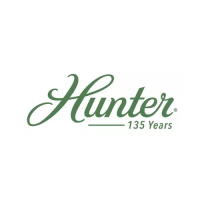Hunter 4
• Boatin
Safet
.14
b
1-3 de
rees,
ou should then see onl
one li
ht. If
ou
still see two li
hts, an approachin
vessel won
t be able
to tell which direction
ou are
oin
When boatin
at ni
ht, remember the followin
: “When
two li
hts
ou see ahead, turn
our helm and show
our
r
.
.5.4 Sound Si
nalin
Devic
Your boat is
rovided with a horn which conforms with
.
.
oast
uard requirements
or boats o
this size. All
lass A boats are recommended to carr
a hand, mouth,
r w
st
e, as we
as a
ower o
erate
orn.
e
ev
ce
The arc o
the li
hts and color allows
ou to determine the
direction a vessel is movin
. How
ood are
our li
hts
ou s
ou
test t
em to see
ow v
s
e
ou m
t
e
at ni
ht. Whether on a trailer or at the marina, switch
n
our li
hts and see how well the
can be seen. Walk
awa
from the boat or row awa
, if
ou are at anchor or
at a moorin
, and see how visible the li
hts are as
ou
move
urther awa
. How eas
are the
to see a
ainst the
back
round of li
hts on shore?
Let’s sa
that
our stern li
ht,
or some reason, can onl
be seen for ½ mile. You are underwa
at 8 knots and a
lar
e ship is approachin
at
5 knots. The ship is onl
4
minutes awa
rom collision with
ou. B
the time the ship
mi
ht” see
ou, identif
the li
ht and decide on the reac-
tion that should be taken, it is too late. A ship travelin
at
15 knots ma
take miles to stop. Look at the stern li
ht
a
ain, as
ou move from the stern toward the bow. Does
the stern li
ht
disappear” as the sideli
ht
appears”
The stern li
ht should disappear and sideli
ht appear at
22.5 de
rees abaft the beam. If
ou don’t see the
reen
starboard sideli
ht or the red port sideli
ht when the stern
li
ht disappears, there is a problem with the arc o
one or
all of these li
hts. This means that if another boat were
approachin
ou at the an
le where no li
hts are seen,
th
r
i
in
r
ri
k
lli
i
n.
You should also check to make sure that
our masthead
li
ht disappears at the same time each sideli
ht disap-
pears an
t
e
ot
sappear w
en t
e stern
t
.
heck
our sideli
hts from dead ahead. You should see
ot
re
an
reen.
owever,
mov
n
towar
one s
e
N
t
i
hts Less than 12 meters
39ft.
12
39ft.
meters to less
than 20
65
t.
meters
w
r
in
l
il-
in
vessels
un
er power
n
m
t
r
ailin
te
ast
ea
2 NM
3.7 km
see not
3 NM
5.6 km
ideli
hts or combination li
hts 1 NM
1.9 km
2 NM
3.7 km
sternli
h
2 NM
3.7 km
see not
2 NM
3.7 km
ai
ailin
V
l
n
r
il
n
ideli
hts or combination
i
hts
1 NM
1.9 km
2 NM
3.7 km
sternligh
2 NM
3.7 km
see not
2 NM
3.7 km
Fi
. 4.
should be used to promote sa
e passin
, as well as a
warnin
to other vessels in fo
, or confined areas, or as
a si
nal to operators o
locks or drawbrid
es. Followin
are standard whistle si
nals
ne Prolon
ed Blas
arnin
i
nal
n
h
rt Bl
Pass on m
port sid
Tw
h
rt Bl
t
Pass on m
starboard sid
Thr
h
rt Bl
t
En
ines in Revers
iv
r M
r
Bl
t
Dan
er
i
nal

